- Home
- Thomas H. Cook
Blood Echoes Page 18
Blood Echoes Read online
Page 18
But if Coleman had changed his appearance, his actions on the afternoon of May 14, 1973, remained utterly unchanged in the mind of the jury. On January 24, after yet another of what the press called a “carbon copy” three-day trial of Carl Isaacs, and a jury deliberation of fifty minutes, Wayne Carl Coleman was convicted on all six counts of first-degree murder.
In the penalty phase, Geer argued along the same lines as he had successfully argued in the cases of Carl Isaacs and George Dungee, raising only one additional issue, the specter of escape, a concern that would be dramatically heightened in regard to the Aldays’ killers in the years to come.
“And if he were sent off for life,” Geer asked the jury, “suppose he should escape? Would you want him back in Seminole County with a .380 automatic in his hand? Would you want him anywhere in America with any kind of gun in his hand, if you sent him off for life, and he escaped?”
In his closing argument for the defense, Harold Lambert made a few brief references to Coleman’s deprived background, the foster homes he’d lived in, the lack of religious training that had been extended to him, then buttressed his arguments with a host of biblical references. “Adam and Eve had two sons whose names were Cain and Abel,” he told the jury. “And Cain took revenge out on his brother Abel, and Cain killed Abel.” This, Lambert said, was the first murder. What, then, was the first punishment? “What did the Lord do by way of punishment?” Lambert asked the jury. “Did he have Cain killed? No. He banished him from the country for the remainder of his life and that was his punishment.” This same banishment, Lambert argued, should be Coleman’s punishment as well. “Justice will be done in this case if you impose six life sentences,” he said, “and maybe he can serve as a human guinea pig to find out how minds such as his work, so that society can prevent tragedies such as this from ever occurring again.”
It was not an argument to which the jury devoted much attention. Less than fifty minutes after its completion, they had rejected it entirely and sentenced Wayne Carl Coleman to death.
Standing beside his attorney, Coleman’s nervousness had by then dissipated considerably. He listened in silence as Judge Geer pronounced sentence, then smiled broadly. “Thanks, Judge,’” he said.
With the three trials concluded, the entire process taking fewer than three weeks, Judge Geer could now pronounce his selection of a date of execution for the last of the Alday defendants. He’d decided that since each of the three was equally guilty the three should die as the Aldays had, together, all of them in one day, February 15, almost seven months to the day from the afternoon of the murders.
Although, as the Donalsonville News reported, this date was merely a formality and would certainly be changed as the mandatory and automatic appeals were made to the Georgia Supreme Court, the wheels at least had been set in motion, wheels that were expected within perhaps two years, inexorably and at a reasonable speed, to carry the Alday killers to their deaths.
“Relief, that’s what we felt,” Patricia Alday said many years later from her office at the Seminole County Department of Children Services. “Relief was about all.”
If it was the relief of closure that Patricia, Nancy, Elizabeth and the other surviving children felt, of things finally brought to an end, a relief that might allow the remaining Aldays to begin to live again in an atmosphere unclouded by their tragedy, then it was certainly to be short-lived.
Chapter Twenty-two
On February 7, two weeks after the last trial ended, and only a few days after the execution dates had been set, the Donalsonville News reported that Bobby Lee Hill and Fletcher Farrington had appealed for a new trial on behalf of Carl Isaacs, one based upon the contention that the verdict had run “contrary to law.”
Attorneys for Wayne Coleman and George Dungee immediately followed suit, beginning an appeals process, the paper noted, which “experts” believed might take as long as “a couple of years or more.”
In the same issue, the paper made the first of what would in the end be dozens of mentions concerning the amounts of money the county was spending for the array of legal proceedings which had resulted from the Alday murders.
According to the News, the first bills had begun to come in, and by Seminole County terms they were high: $3,864 for jury pay alone, a sum considered particularly burdensome to a county whose economic condition was far from affluent, but a figure that was a mere shadow of the vast expenditures to come.
Two weeks later, on Sunday, February 26, 1974, Ernestine and her children gathered at the Spring Creek Baptist Church to break ground on the new sanctuary she had decided to help build, and which she intended to dedicate “in loving memory” to her lost family.
Over a hundred years old, the church had long been a part of her and Ned’s religious life. Isaac Alday, Ned’s father, had planted the first cedar on its front grounds, and over the years a host of family members had worshiped and officiated within its spare wooden sanctuary. Four of the five murdered Alday men had been deacons of the church. Mary had served as its treasurer, while still other family members had occupied various positions from training union officer to song leader.
Because of the family’s long commitment to the church, Ernestine decided that those funds which had been coming to her since Mrs. Braswell’s first five-dollar bill, and which now amounted to approximately eighteen thousand dollars, would not be used for her own or any member of the family’s personal benefit. Instead it would be spent exclusively to help erect a new brick sanctuary to replace the rapidly deteriorating wooden one the Spring Creek Baptist Church currently used to conduct its services.
The ground breaking was attended by the entire Alday family, as well as more than a hundred people from the community. Surrounded by her children and grandchildren, Ernestine, with shovel in hand, made the first break in the red clay earth upon which the sanctuary would be built.
Apart from the six graves which were to be bordered with imported black marble, the sanctuary would be the single reminder of the Aldays’ lives and deaths in Seminole County.
As to the most macabre reminder of the events of May 14, the trailer in which all but Mary Alday had died, it had already been sold and towed away. “We don’t know where it is,” Bud Alday later told an inquiring reporter, “and we don’t want to know.”
As the weeks passed, though, it became clear that more than the trailer was at stake, as issues involving the disposition of the Alday estate steadily grew more complicated. In the weeks following the murders, a great many legal complexities had begun to emerge. Utterly overshadowed during the first weeks after the murders, these thorny questions of inheritance and the division of property slowly began to entangle Ernestine in legal complexities with which she was hardly equipped to deal.
Unaccustomed to disputes of any kind, and utterly innocent of the law’s inflexible position in matters of probate, Ernestine suddenly found herself faced with a legal reality whose consequences she could not possibly have anticipated: the total dissolution of the family farm.
Such a possibility equally staggered her children. Having grown up on the wide expanse of Alday land, having played in and worked its more than five hundred and fifty acres of fields and woods, neither Nancy nor Patricia nor any of the other surviving children could imagine that, technically, it might no longer belong to them. And yet suddenly their ownership was in contention. The stretch of land which had been held in the family name for as long as any of them could remember had fallen into a legal netherworld which could not have been foreseen at the time of the murders.
More than anything, the problem had its origin in the extraordinary closeness of the Alday family ties. As Ned had gotten older, his health had noticeably deteriorated. Worsening arthritis had made it impossible for him to obtain farm financing, since his physical capacity to maintain the farm appeared in doubt. To eliminate the risk that his own poor health might put the farm in jeopardy, and in order to make the Alday lands attractive to various agricultural loans, Ned had
deeded the entire farm, all its acreage, structures—everything from barns and sheds to the family home—and various tools and machinery to his sons.
It had never been a transaction intended to remove the Alday estate from Alday control. But the slaughter on River Road could hardly have been anticipated. Nor could the legally defined line of succession which resulted.
In that line, Mary Alday, by birth a Campbell, had died last. For the hour or so she had survived her husband and his family members, she had inherited the entire Alday estate. Thus, at her death it had legally passed not to any member of the Alday family, but to Mary’s next of kin, her mother and father, the Campbells of nearby Colquitt.
“As far as the law was concerned, everything belonged to them,” Ernestine Alday explained in 1990. “Everything. Even the house I was living in, the one Ned built and deeded to the boys.”
Ned had known his sons well enough to know that they would never have dispossessed him. He had reared them to be honest, dutiful, trustworthy, and had then demonstrated his trust by deeding them everything he had. Already frail, he could not have imagined the circumstances under which he and all his farming sons would die on the same day.
But they had. And as far as the law was concerned, the farm now belonged entirely to Mary Alday’s heirs.
What the Campbells would choose to do with it, and thus with all the worldly goods the Alday family had possessed on the afternoon of May 14, 1973, would take two years to decide.
* * *
During the coming months, while negotiations concerning the Alday estate and the construction of its memorial sanctuary at the Spring Creek Baptist Church continued, Carl Isaacs, now housed on Death Row in Reidsville State Prison, began to erect a monument of his own, one to his own lawlessness.
Not long after Carl’s conviction, Charles Postell, a staff writer for the Albany Herald, wrote Isaacs, requesting an interview on Death Row. Carl agreed to the interview right away, and on May 14, 1974, a year to the day of the murders, Postell published the first of several articles he would write about Isaacs in the coming weeks.
Taken as a whole, the articles, as well as Postell’s later book on Carl’s life, amounted to a public presentation of himself that perfectly fit Carl’s criminal fantasy life, murders, rapes, robberies, and assaults piling up as fast as Carl’s fervid imagination could sprout them.
Simply spinning wildly exaggerated tales of his own demonic grandeur was not enough for Carl, however. He wanted to sell himself as the living embodiment of pure, unrepentant evil by laughing at his victims, offering them nothing less than the full measure of his scorn. It was a task he set about with enormous relish.
Thus, in the first of Postell’s articles, Carl claimed that on the anniversary of the Alday murders, he intended to send a note to Wayne Coleman, whose own residence was just down the Death Row catwalk in Cell 8, D-4, wishing him a happy anniversary, and telling him to “Pop the champagne.”
In the interview, Carl continued to claim that he’d had nothing to do with the actual murders, but that he knew who was involved. “When I die in the electric chair,” he told Postell, “my brother Billy will come forward and tell the truth.”
In the same interview, Carl threatened Billy in no uncertain terms. “Billy’s address is unknown to me,” he said, “but he’ll never live to hit the streets again. This is a big family, and he shouldn’t have done what he did.”
As to the killings, Isaacs declared that he “didn’t think” about them, although he did give a certain grudging respect to Mary Alday. “Mary was the only one that put up a fight,” he told Postell, before adding disdainfully, “the rest just lay down and got shot.”
His own execution was more on his mind, however, and he expected it to come relatively soon. Even so, it was not an eventuality he dreaded, since prison life was not to his liking. “You don’t know the hell they’ve put me through,” he said.
As to what he intended to do while Ernestine was conducting an anniversary commemorative service for the people he had murdered, Carl told Postell that at about that time, he would probably be watching Gomer Pyle, his favorite television program.
On the evening of May 14, 1974, Ernestine Alday was not watching Gomer Pyle. Instead, she was standing under the large trees whose branches swayed over the graves of her kindred, her mind not locked in criminal fantasies, but on the love she had felt for Ned, Aubrey, Shuggie, Jerry, Jimmy, and Mary Alday.
By then, the black marble headstone had been laid in the small cemetery of the Spring Creek Baptist Church. Impressive in its modesty and muted reverence, it read only “ALDAY FAMILY.” Within the large rectangle of black stone that swept out from the central monument, the six slain Aldays lay buried beneath plain marble slabs.
Standing very still, her white hair rocked by the warm summer wind, Ernestine spoke to the few people who had gathered on the day the stones were laid. “They lived together and joined the church together and died together,” she said as her eyes drifted over the six names that had been inscribed in the individual foot stones. “I don’t know why this happened. I just have to say it was God’s will.” She heaved her shoulders gently, unable to say more, her eyes now trained on the simple inscription she had selected several months before to adorn their graves: “They steer’d the course to the same quiet shore, not parted long, and now to part no more.”
At the conclusion of the ceremony, a few hymns were sung in the old Spring Creek sanctuary, and a prayer was offered for the souls of the dead and the grace of the living.
“It was very quiet and dignified,” Nancy remembered. “I think my Daddy would have liked it.”
Three weeks later, at 8:00 P.M. on June 7, a gospel singing program was held at the local high school to benefit the Alday memorial fund in its effort to complete the sanctuary. Tickets were sold at two dollars each, and those who came were treated to a lively program of gospel singing from such groups as the Hymn Masters of Donalsonville, the Tone Masters of Bainbridge, and the Sunny South Singers of Atlanta.
But that was not all. Later in the evening a group of young men also gave an exhibition. The group, known as Karate for Christ, performed karate exhibitions and gave religious testimony.
During the next few weeks, donations of additional monies for the sanctuary continued, primarily from residents of Seminole County, a sacrifice that served as a tribute to the standing of the Aldays in that community since, as the Donalsonville News reported in June 1974, under present conditions, the average young man in Seminole County could expect to earn close to $336,000 in the next forty-five years or so, an earning capacity of less than $7,500 per year.
Still, despite the marginal life that surrounded it, the new sanctuary was completed on November 4,1974. Dedicated to “The Glory of God in Memory of the Alday Family,” its initial construction costs had been borne entirely by the Alday Fund.
With this final act of commemoration, the people of Seminole County paid their last formal respects to Ned, Shuggie, Jerry, Jimmy, Aubrey, and Mary Alday. From that point on, they would steadily recede from the mind even of their own community. That Ned had whiled away the long winter days by telling tall tales at Johnson’s Grocery Store; that Jerry had been so fastidious in his dress he’d often taken apart his store-bought clothes and resewed them to perfection; that Jimmy had rushed to his prized World Book to get the facts in any family dispute; that Aubrey had delighted in the presence of his brother’s children, paying them pennies for their kisses; that Shuggie had drawn his mother beneath his arm on the last day of his life to propose a long-awaited fishing trip; that Mary had delighted in the brightly colored phlox that sprang up in such profusion the last month of her life; all of this would be lost as their individual faces melded together during the following years, becoming featureless and void, as if themselves pressed flat beneath the steadily accumulating weight of those court transcripts and appeals in which they now existed only as words upon a page, their lives remembered solely in the protracted legal co
nsequences that clung so tenaciously to their deaths.
Chapter Twenty-three
At the same time that the faces of Ned, Shuggie, Jerry, Jimmy, Aubrey, and Mary Alday were dissolving, Carl Isaacs’ profile was emerging with increasing force and fullness.
As starved for attention as ever, and increasingly intoxicated by his own infamy, Carl began a concerted campaign to keep himself prominently in the public eye.
The medium through which he spoke continued to be Charles Postell. Spurred on by Carl’s performance at their first interview, Postell suggested others, and Carl, flattered by such attention, was more than willing to comply.
Thus, over a period of many weeks, Postell periodically visited Carl in Reidsville, smuggling him miniature bottles of alcohol, a tactic that was wildly successful in loosening his tongue.
Fueled by drink, Carl quickly shed the repentant, born-again Christian pose he was simultaneously using on other outside contacts, and unleashed an unprecedented attack upon the Alday family.
In an article published in the Albany Herald on January 16, Carl told Postell that he’d like “to get out and kill more of” the Aldays, since they represented “the type of society I don’t like.” The Aldays “loved the church so damn much,” Carl blustered, that “they should have been killed and buried right in the church.” His reason for hating the Aldays played havoc with the Protestant ethic. “Working people don’t do a damn thing for me,” he said.
When it came to himself, however, Carl’s heart overflowed with sympathy. He declared prison an affront to his humanity, voicing what was surely one of the most unusual and alarming complaints ever made about incarceration. The problem with being locked up, he said, was that it prevented him from being out in the world “so I can do something to ease this hate.”

 The Interrogation
The Interrogation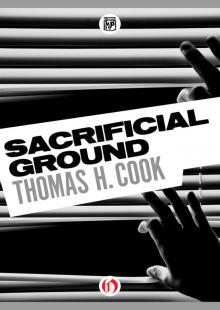 Sacrificial Ground
Sacrificial Ground The Fate of Katherine Carr
The Fate of Katherine Carr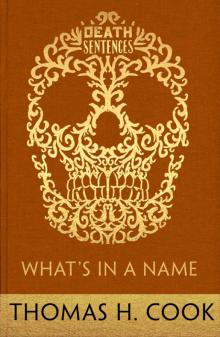 What's In A Name
What's In A Name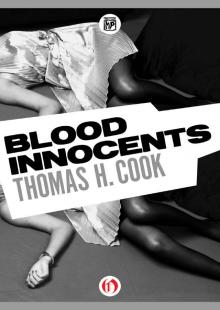 Blood Innocents
Blood Innocents Peril
Peril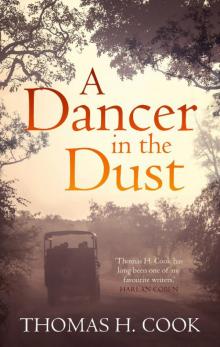 A Dancer In the Dust
A Dancer In the Dust Breakheart Hill
Breakheart Hill The Chatham School Affair
The Chatham School Affair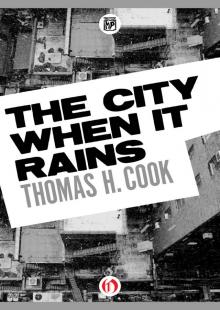 The City When It Rains
The City When It Rains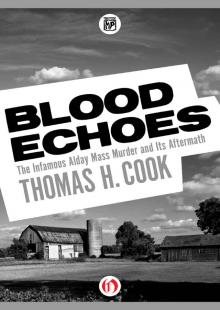 Blood Echoes
Blood Echoes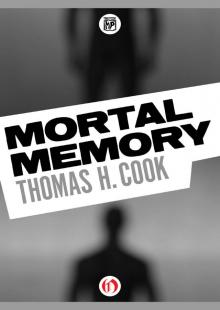 Mortal Memory
Mortal Memory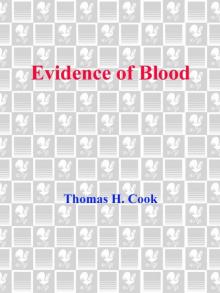 Evidence of Blood
Evidence of Blood Into the Web
Into the Web The Crime of Julian Wells
The Crime of Julian Wells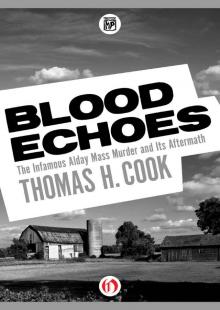 Blood Echoes: The Infamous Alday Mass Murder and Its Aftermath
Blood Echoes: The Infamous Alday Mass Murder and Its Aftermath Night Secrets
Night Secrets Places in the Dark
Places in the Dark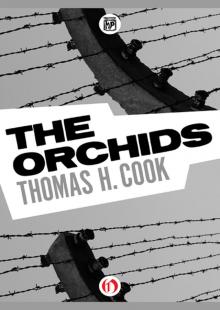 The Orchids
The Orchids Elena
Elena Streets of Fire
Streets of Fire Instruments of Night
Instruments of Night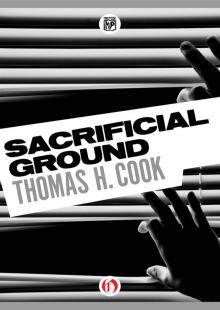 Sacrificial Ground fc-1
Sacrificial Ground fc-1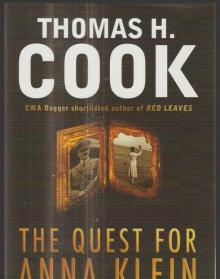 The Quest for Anna Klein
The Quest for Anna Klein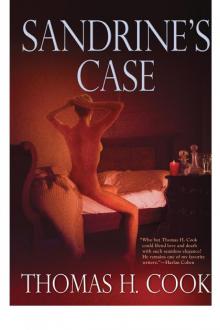 Sandrine's Case
Sandrine's Case Quest for Anna Klein, The
Quest for Anna Klein, The Fatherhood
Fatherhood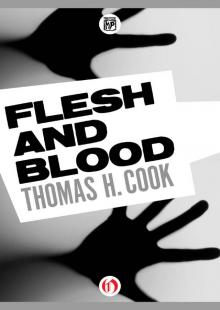 Flesh and Blood
Flesh and Blood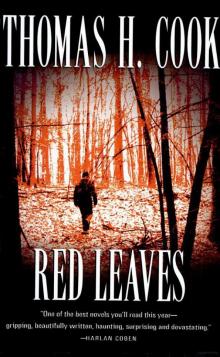 Red Leaves
Red Leaves